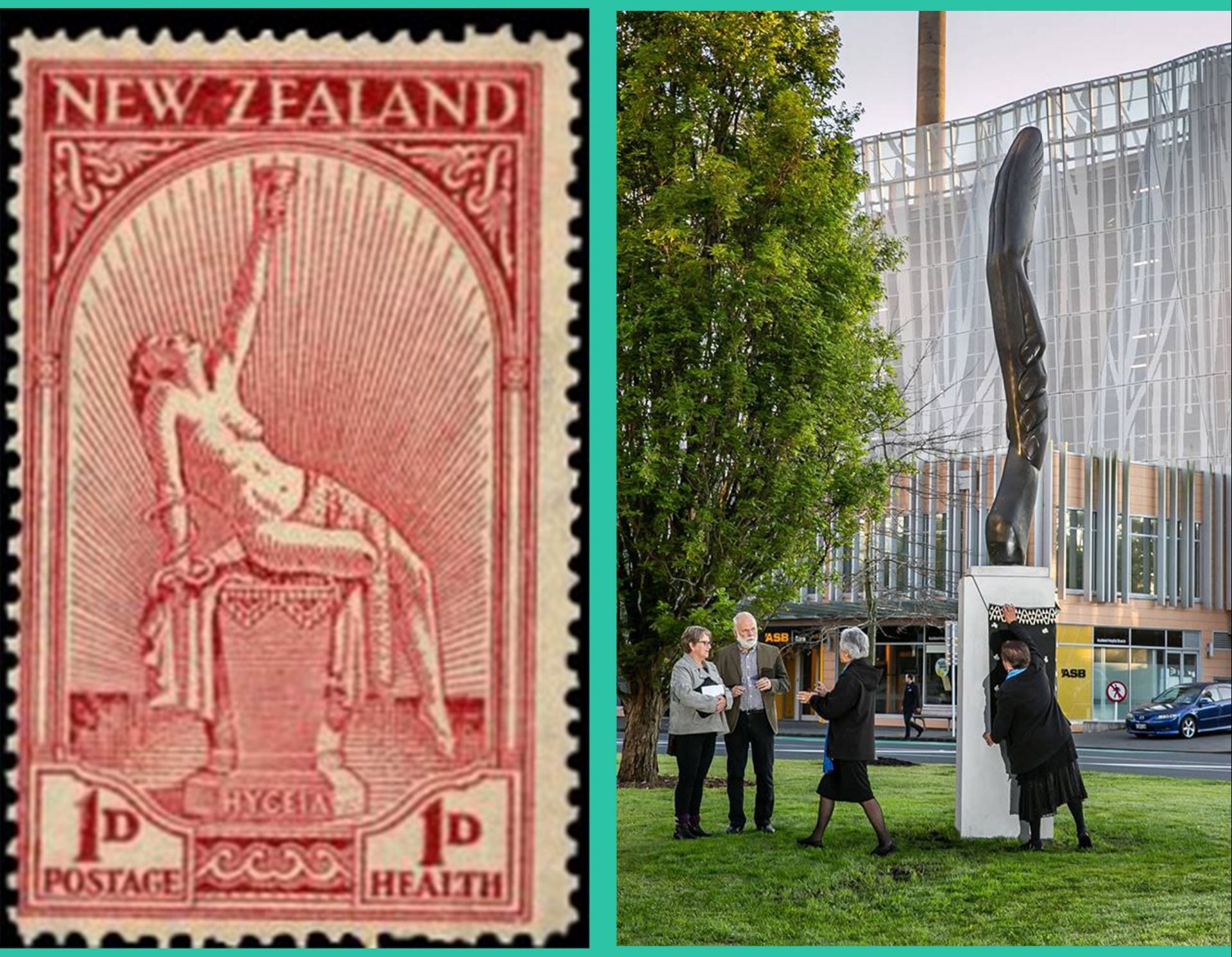ARTWORKS
This section incorporates a history of the artworks displayed within the Faculty of Medical and Health Sciences building at Grafton.When Dean Cecil Lewis resigned in mid-1974 the University News recorded that:
In 1966 the School of Medicine consisted of one modest house, complete with geranium-filled window boxes, and a collection of contentious plans.’
By 1974 the campus was well on the way to completion and thoughts turned to alleviating the stark interiors of the concrete pre-clinical, clinical and link buildings. The first relief came in the form of a bronze bust of Sir Douglas Robb, the driving force behind the Auckland Medical School. This head and shoulders portrayal had been created in 1956 by John Kavanagh (1903-84), a senior lecturer in sculpture at the University’s Elam School of Fine Arts. Robb, who had been knighted in 1960, died in his sleep on 28 April 1974, one day short of his 75th birthday. Six weeks later, incoming Dean David Cole announced that Lady Robb was to donate `a very fine bust’ to sit outside the lecture theatre named in his honour.
If Robb was the founding father of the Medical School then Cecil Lewis, appointed as the first Dean in 1965, can be regarded as the midwife. Lewis resigned around the time of Robb’s death and was farewelled at a Faculty meeting on 19 June 1974, having overseen the graduation of the first cohort of Auckland medical students. The following year Mark Thomas, then a 5th year medical student (and now an Associate Professor in Molecular Medicine and Pathology at the University of Auckland), asked Lewis if he would sit for a bronze bust to be located in the school.
He kindly agreed and I then visited him in his home in Upland Road, where I took some photographs of his head from various angles. I then modelled his head in clay, and after some slightly complicated fiddling about involving a plaster mould, ended up with a wax replica of the clay head. When I had made some finishing touches to the wax head I took it to a foundry in Otahuhu where a bronze head was cast using the lost wax process.
The project was funded by the Auckland University Medical Students’ Association and the bust was housed in the Philson Library for many years. It was relocated to Old Government House, along with that of Robb, while the Grafton Campus was being refurbished. In 2018 the two artworks were returned to the Faculty of Medicine and Health Sciences, where they sit alongside one another at the main entrance.
In 1975 Hamish Keith, who was Keeper of the Auckland Art Gallery from 1965-70 before going freelance, was commissioned by the Works Committee Fine Arts Sub-committee to source modern artworks for the new Medical School; the budget for this project was $20,000 (equivalent to around $200,000 in 2018).
Two artists were recruited to provide works which would be displayed on each of the seven floors of the building. Colin McCahon (1919-87), whose paintings initially focused on landscapes but later evolved to concentrate on numbers and texts, was asked to provide numerals for the main stairwell, one for each level. These took the form of black and yellow perspex paintings, each with a black Roman numeral on a vivid yellow background. These panels were removed at one stage for exhibition as a group, after extensive conservation, but are now back in the windows beside the main lifts.

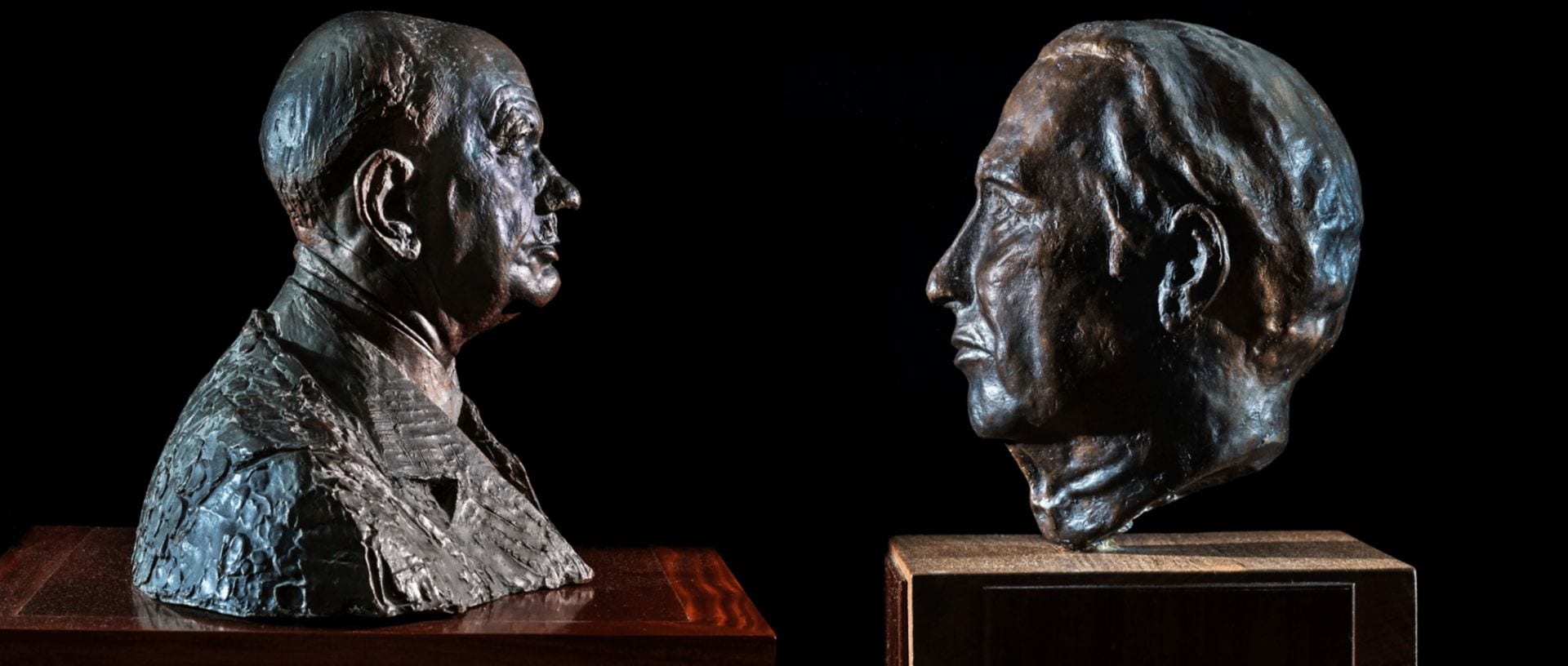

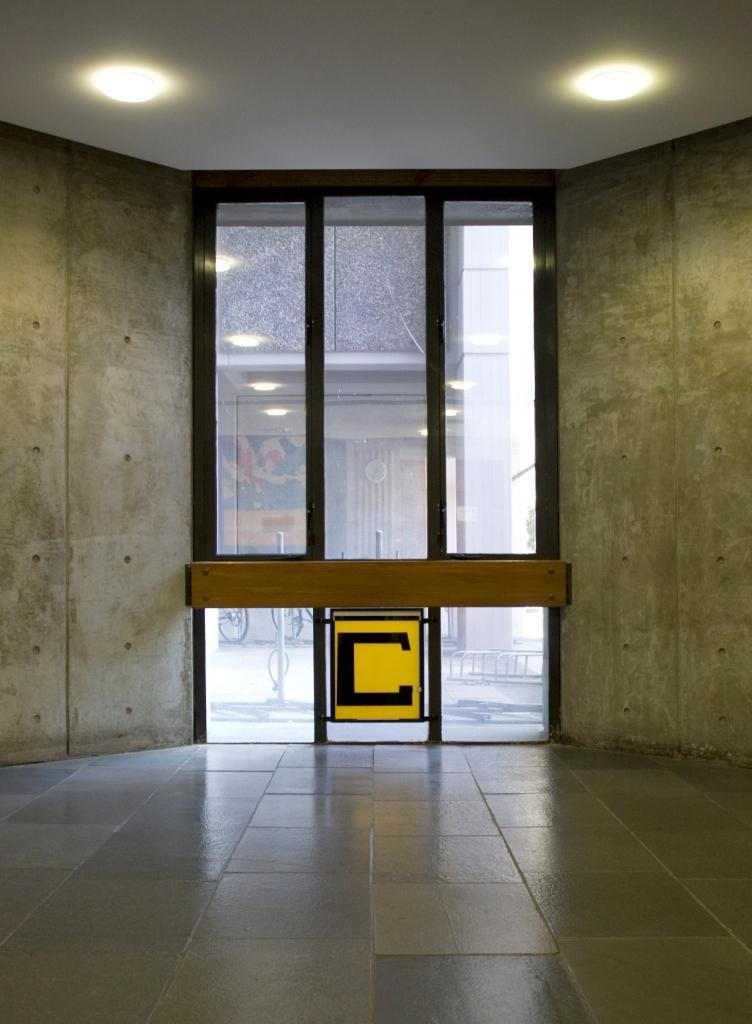
One colour that Hanly handled well was red, and six of the works contain vivid reds. There was an obvious association with blood and surgery but there is nothing macabre about his great streams of painterly red, which suggest life force and surges of joy.
Also writing in 2011, art critic John Hurrell was somewhat less complimentary:
This is an interesting, unusual project to think about but it is not Hanly at his best. He had many much better moments in his career. These works should stay in a site similar to the one they were designed for – to be experienced there and only there.
Hanly’s paintings are positioned adjacent to the main lifts in the Link building, and sit opposite McCahon’s numerals.

Keith also commissioned a number of single pieces to offer some relief from Stephenson and Turner’s brutalist architecture. Don Driver (1930-2011), who worked at the Govett-Brewster Art Gallery in New Plymouth from 1969-92, contributed an untitled wood and perspex creation, completed the year before he suffered a severe stroke which hampered his creativity for some time. Driver’s piece originally overlooked the imposing sandstone gates at the entrance to Domain Drive; it is now situated on the ground floor, with Boyle Crescent as a backdrop.
Associate Professor Linda Tyler has described Szirmay’s work in the following terms: Commissioned for the lift lobby on an upper floor of the Medical School’s Link building, a brutalist fair-faced concrete structure designed by architects Stephenson and Turner, this sculpture is designed to complement the geometric regularity and severity of the surrounding building.

Greer Twiss (b. 1937), one of the first New Zealand artists to work in cast bronze, was head of sculpture at Elam from 1974, by which time he had already mounted eight solo exhibitions. `Link’, a steel and cast bronze work, was initially displayed on the floor in one of the lift foyers; it is now wall-mounted on Level 1, around the corner from the lifts.

The last of the `modernist’ sculptures, dating from 1976, was created by Tom Taylor (1925-94), a lecturer in sculpture at the Ilam School of Fine Arts, University of Canterbury, from 1960-91. `Transit’ was bolted to the walls and ceiling in one of the stairwell lobbies and described in Michael Dunn’s 2002 history of New Zealand sculpture as `uncompromisingly abstract’.
Sadly, one of the 1975 artworks is no longer on display. The colours in Gretchen Albrecht’s felt and canvas wall hanging were too unstable to survive the Medical School environment and had to be withdraw from display because of severe fading. It has now been deaccessioned from the University’s Art Collection.
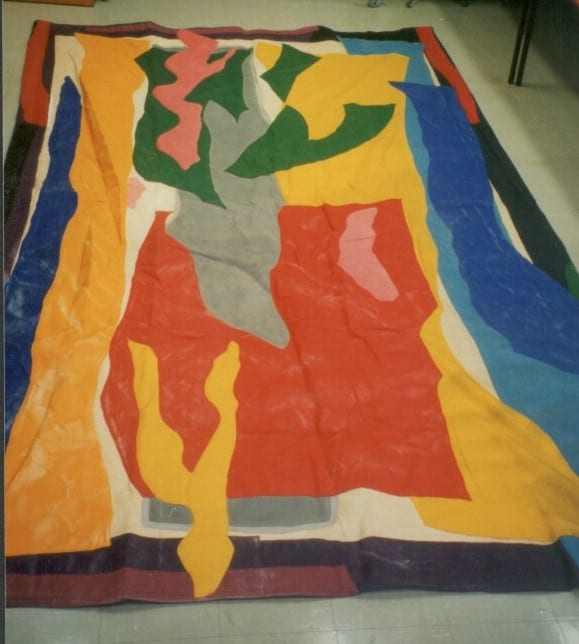
Gretchen Albrecht wall hanging.
The starkness of the School’s concrete stairwells was relieved in 1978 by the installation of a series of murals running from the basement to the top floor of the Link Building. This was masterminded by Fine Arts lecturer Peter Haythornthwaite and executed by students from his Department. Haythornthwaite’s back catalogue, which has been categorised as `eclectic’, includes signage for Auckland Zoo, the Stack Vista woodburner, the Raven Mop-A-Matic, and a sheep drenching system.
Another major piece was added to the Medical School display in 1981. Auckland ophthalmic surgeon Harold Coop, an Otago graduate, had completed his final year at Auckland in 1958. Although some sources state that Coop started painting in 1959 after he graduated, he had in fact designed the cover to the 1957 Otago capping book which paid homage to current trends. As Coop himself recalled:
What a year to be illustrating! Rocket science was just being taken seriously, and rock and roll had arrived.
In 1981 Coop presented a 7-metre wide illuminated perspex and plastic mural to the Medical School. Entitled `The Northern View of New Zealand’, this featured the pohutakawa, a recurring feature in Coop’s art over many years. This 24-panel work is now a core feature in Café 85 on the ground floor of the FMHS.
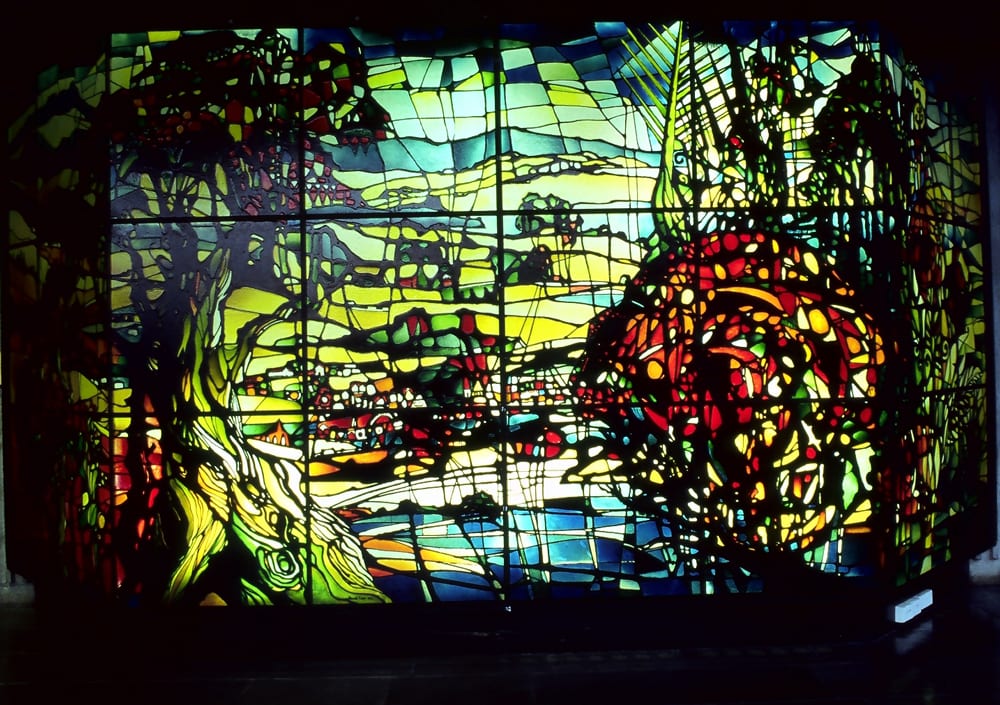

None of the installations listed above had any Māori connection. In 1977, however, Dr Bruce Gregory (1937-2016), of Ngai Tāhu and Scottish descent and Kaitaia’s first Māori GP, presented to Dean David Cole a toko toko or ceremonial talking stick – `Te Kotahitanga o Ngā Hapū o Te Tai Tokerau i runga o Mataatua’. Gregory had personally carved this as a symbol of the desire by both Māori and Pakeha to discuss issues around health care. The current Dean, John Fraser, is still the custodian of the toko toko.
In 1981 Dr Gregory became MP for Northern Māori in succession to the late Matiu Rata, holding the seat until 1993 when he quit politics for an involvement in iwi health and politics.
The importance of Māori to the Medical School was enhanced in 1979 when a set of Māori carvings over the students’ common room, executed by medical student David Tipene-Leach, was unveiled and blessed by one of the kaumātua during a return marae visit by the Te Rarawa people of Ahipara. This room was named manaakitia (place of helping) in 1983. Some twelve years later a name plaque was unveiled to commemorate the event; amongst those present were a number of MAPAS students, including two who went on to join the ranks of Māori psychiatrists and another, Elena Curtis, who would come to play a leading role in the evolution of MAPAS and Vision 20:20 after she graduated in 1995.
Another Māori carving is the central motif of the plaque unveiled by Prime Minister Helen Clark to commemorate the opening of the School of Pharmacy on 10 March 2001. This was executed by Te Rikawa Dallas Eru Tawha Thompson (c. 1951-2014), a respected Tāmaki Makaurau kaumatua.
Over the years there have been several additions to the artworks displayed on the Grafton complex. Peter Millman (b. 1961) completed his Bachelor of Fine Arts at Elam in 1989, the same year in which he completed an unnamed diptych which now hangs on the back wall of the lift shafts on the ground floor. Millman, who now goes under the name Brierly-Millman, changed direction to become one of New Zealand’s most successful sculptors; in 2004 the `Giantwins’, commissioned by a Texan collector, was the first New Zealand artwork to fetch more than $1 million. Brierly-Millman has described his goal as `To Heal through Art’ which makes the FMHS a fitting home for one of his earliest works.
In 2012 some of Pick’s paintings featured in the opening credits of Jane Campion’s acclaimed TV series, Top of the Lake.
The form adopted by Stinger paid homage to a previous depiction of Hygeia, on a 1932 New Zealand health stamp, at a time when half the proceeds of the stamps were given to children’s health camps; it also incorporates sprigs of flax to honour traditional Māori medicine.
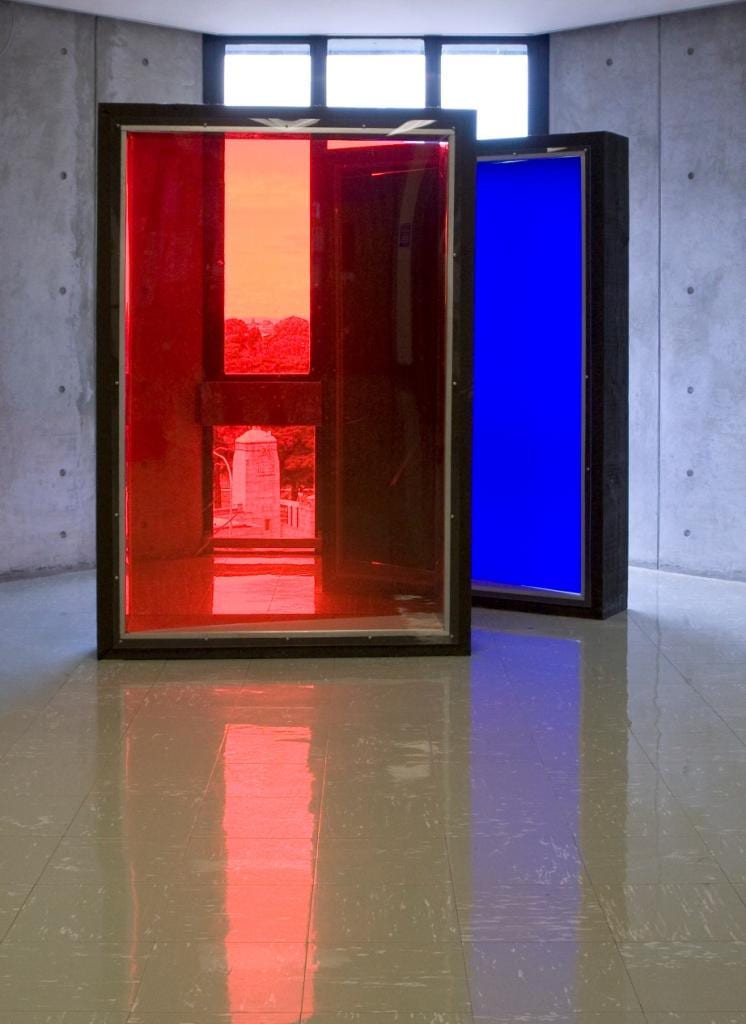



Tom Taylor, Transit.
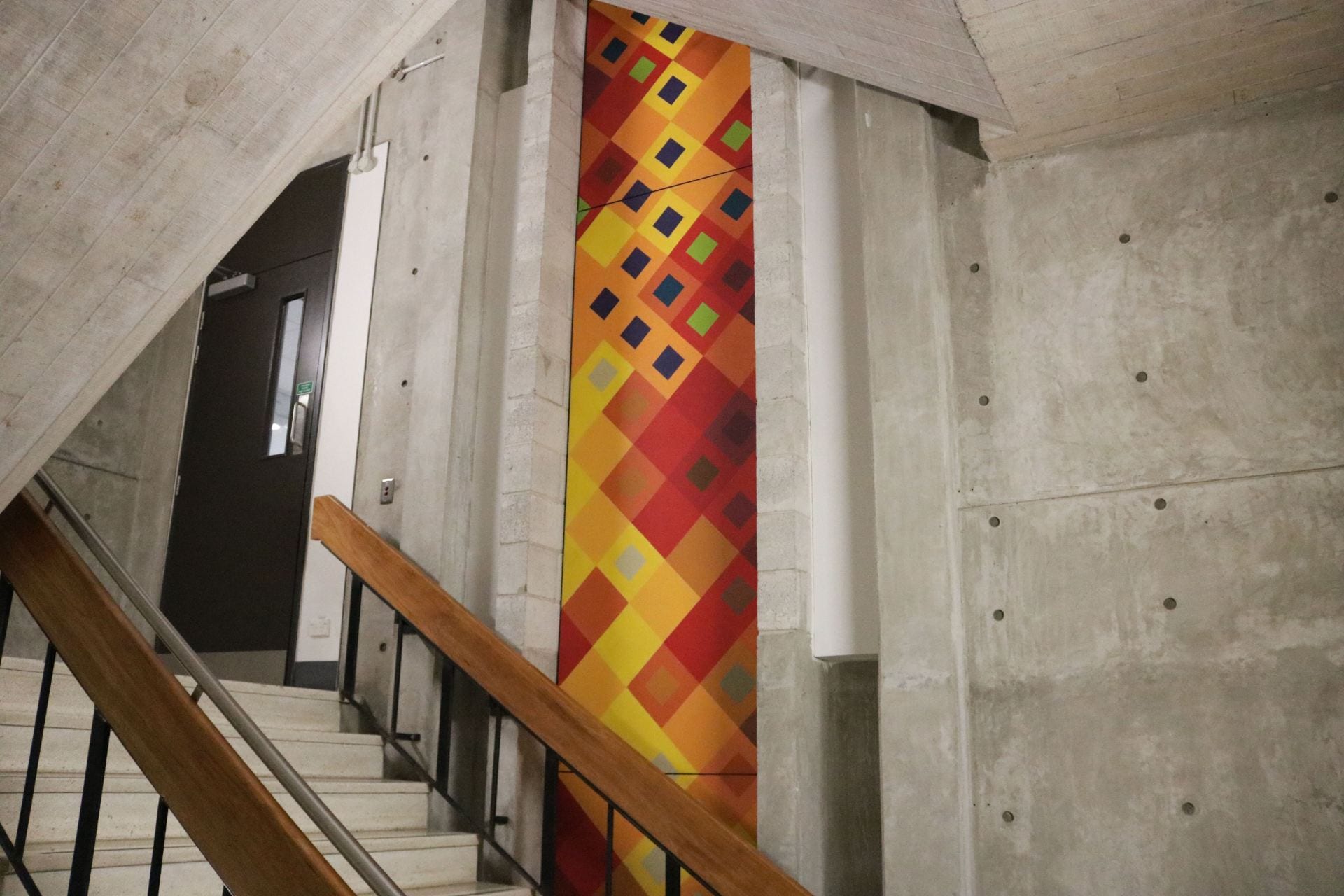

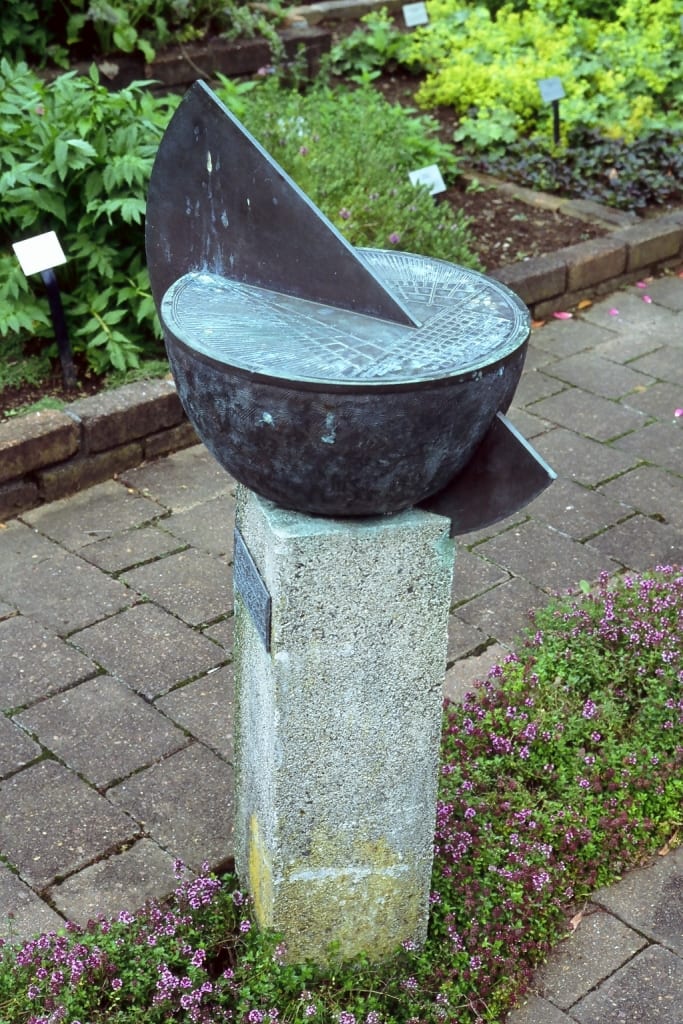

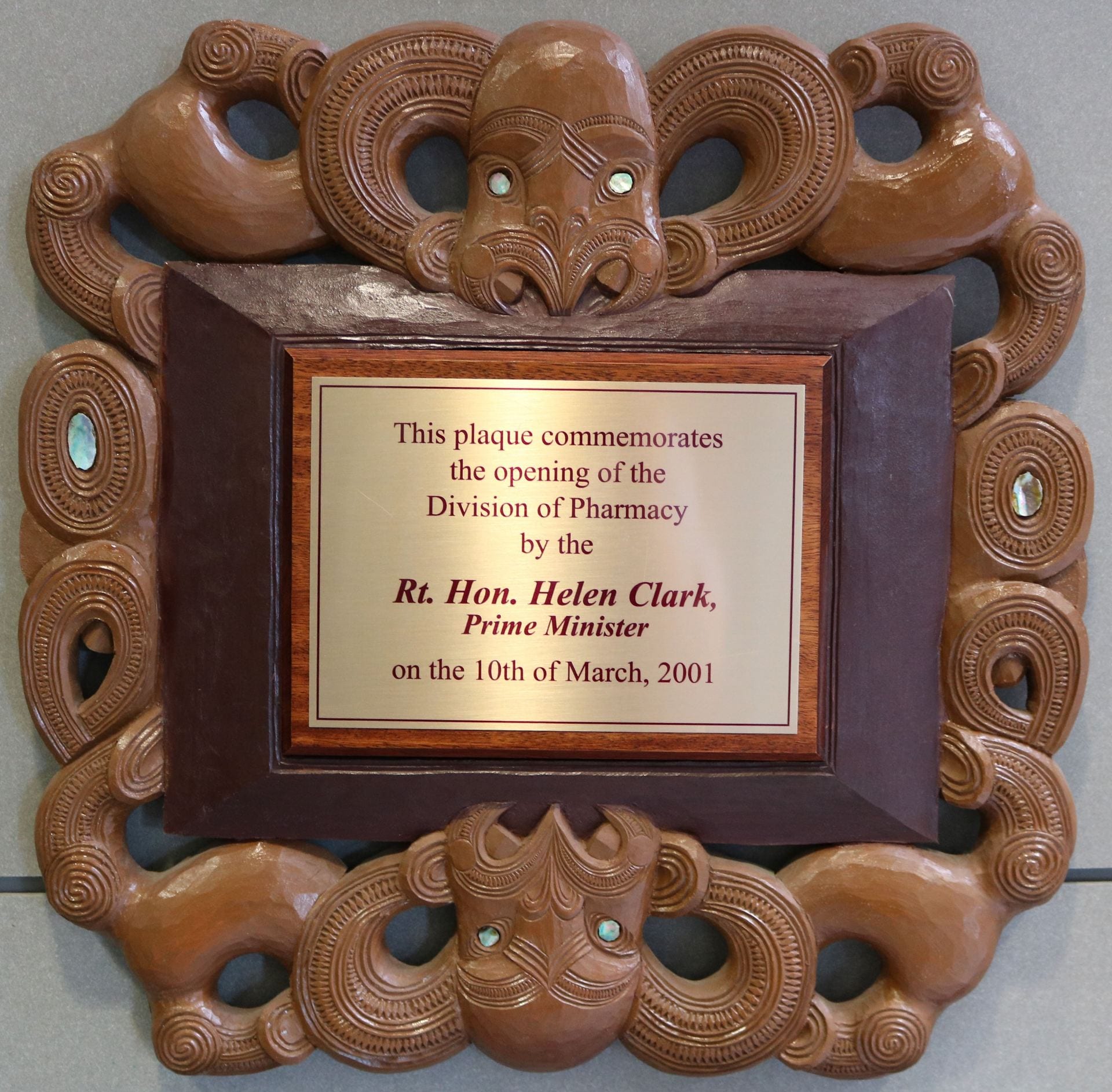
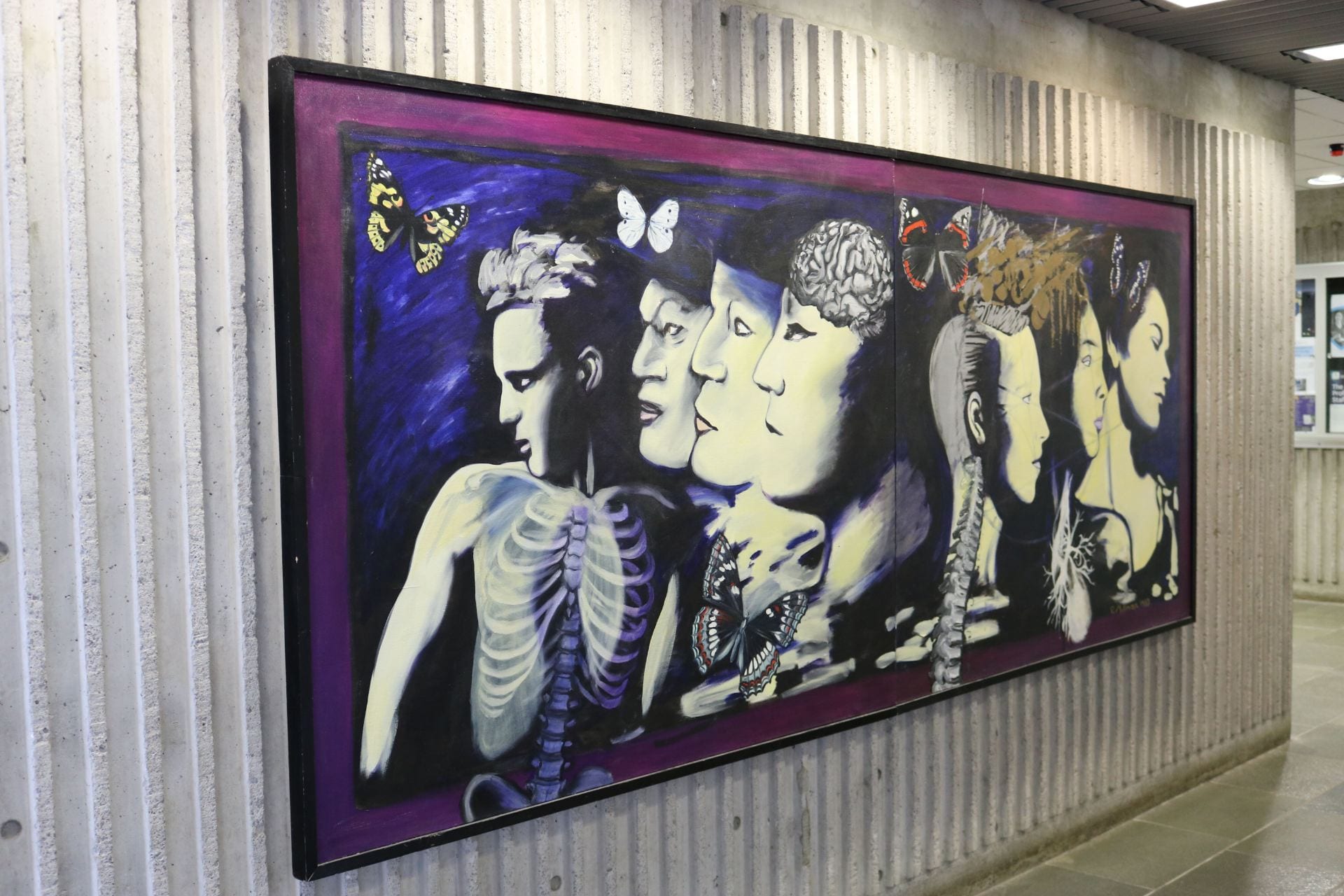
Ben Millman, Untitled.



